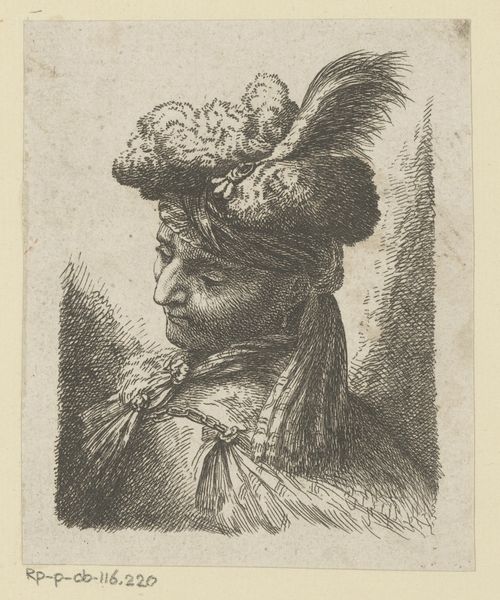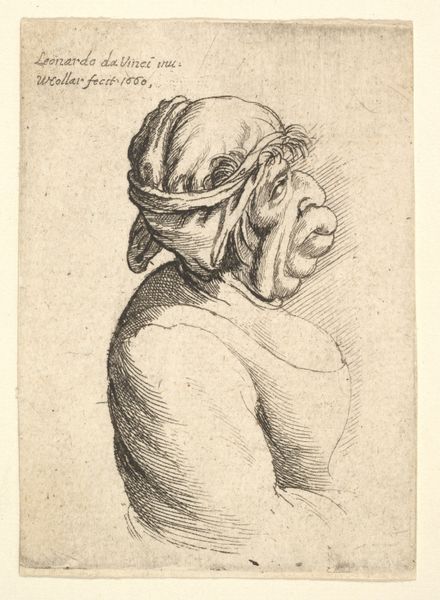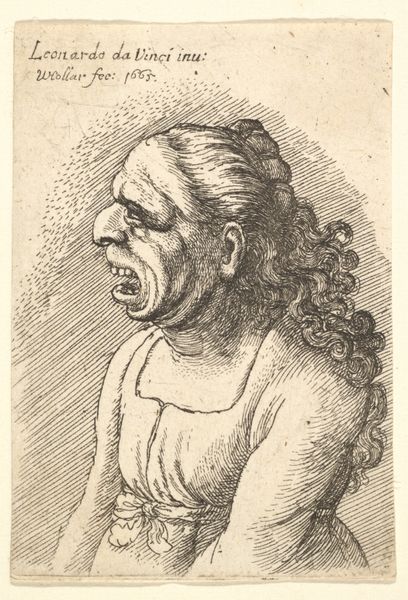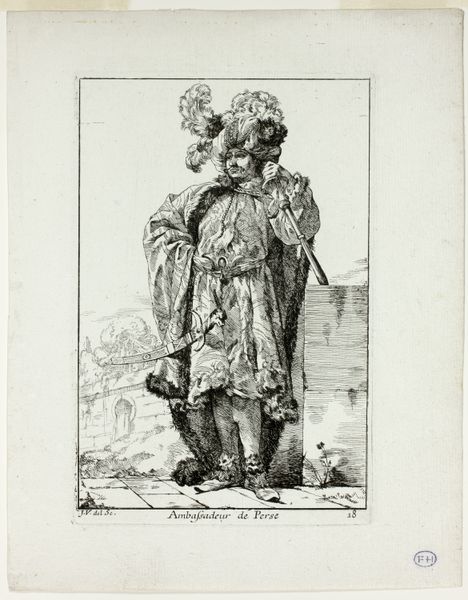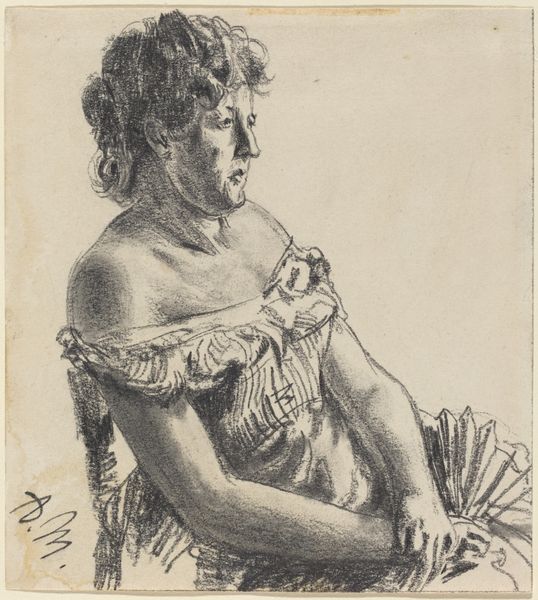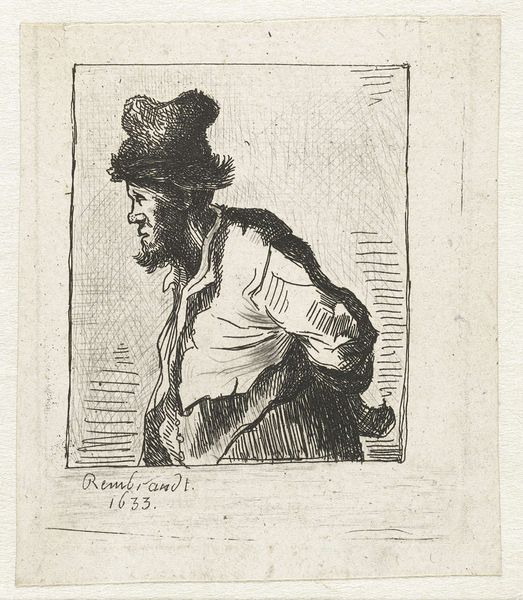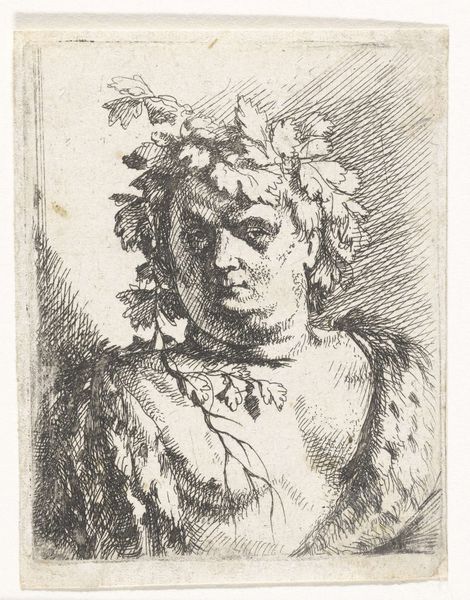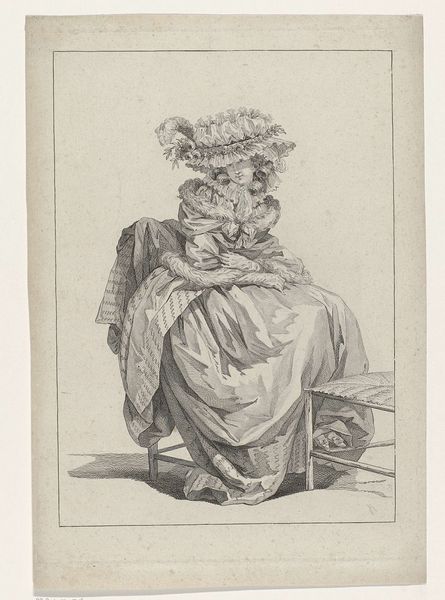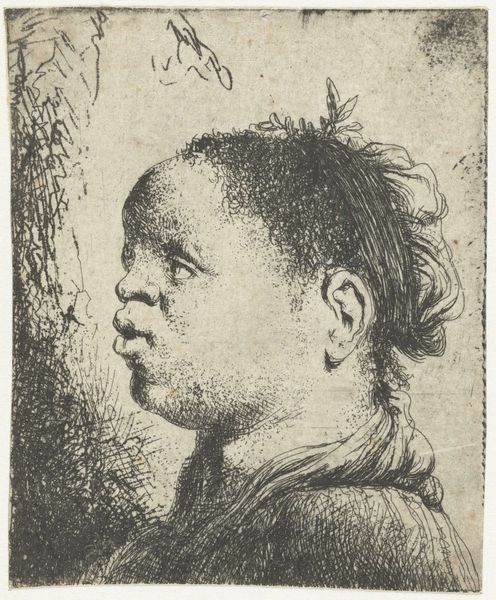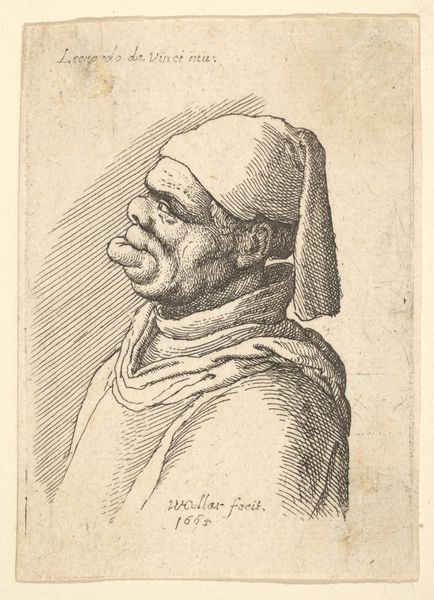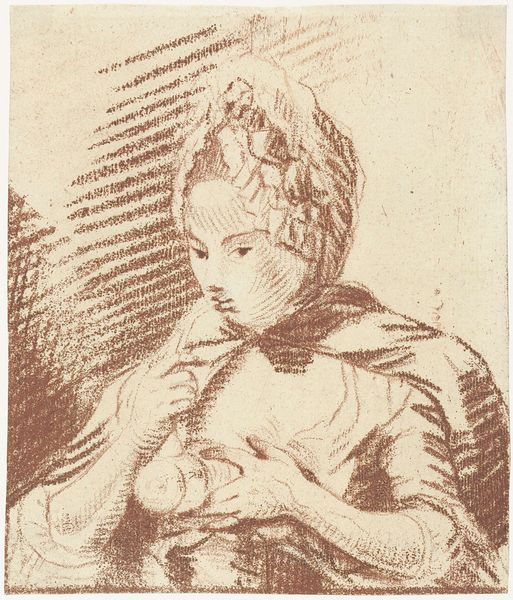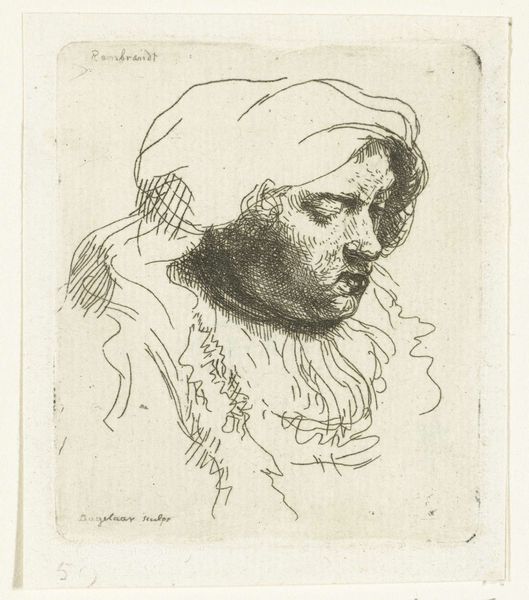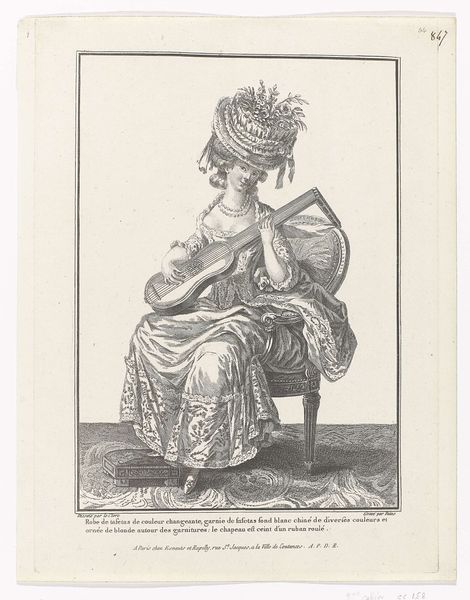
Bust of a deformed woman with curly hair in profile to the left 1665
0:00
0:00
drawing, print, etching
#
portrait
#
drawing
#
baroque
# print
#
etching
#
figuration
Dimensions: Plate: 2 1/2 × 1 3/4 in. (6.4 × 4.4 cm) Sheet (trimmed to plate line): 2 9/16 × 1 7/8 in. (6.5 × 4.8 cm)
Copyright: Public Domain
Curator: My first impression is one of slight discomfort, almost like a medical illustration presented as fine art. There's an unsettling directness. Editor: Indeed. We're looking at "Bust of a deformed woman with curly hair in profile to the left," an etching by Wenceslaus Hollar, created around 1665. It's part of the Metropolitan Museum's collection. What strikes you beyond the initial discomfort? Curator: The artist’s fascination is evident. The hair, those tight curls, seems to be lavished with care compared to the rendering of her facial features. Is there a symbolic inversion at play? Beauty and repulsiveness juxtaposed to make us question conventional norms? Editor: Perhaps. In the context of the 17th century, the concept of physiognomy was popular - the belief that one could discern character from physical features. Prints like this circulated within intellectual and artistic circles, prompting debate about beauty, monstrosity, and the boundaries of representation. Consider how the Hapsburgs promoted images that portrayed the nobility’s deformities in ways that suggested virtue. This makes the images deeply political, in effect. Curator: So, this image becomes less about objective portrayal and more about encoding complex ideas about the social order. The profile, almost like a Roman portrait, grants the sitter an air of nobility, however subverted by her "deformity.” Is it about granting dignity to the marginalized, or othering her even further by emphasizing her difference? The question looms like a spectre of the past! Editor: I agree. It reflects anxieties and power structures of the time. By mimicking classical portraiture, the artist inserts her into a lineage of representation, whilst simultaneously marking her divergence. Consider that while Hollar “made” this print, it’s clear from the writing on the print itself that the composition may come from Leonardo Da Vinci. The layering is a deliberate political act in how this type of work makes claims for artistic authority by allying itself to cultural institutions, in this case “High Renaissance” masters. Curator: A powerful observation! Hollar elevates and otherizes his sitter simultaneously. It becomes a sort of a historical commentary through a symbolic inversion of visual rhetoric, wouldn’t you agree? Editor: Absolutely, and looking at it today forces us to grapple with the gaze, who is allowed to represent whom, and to what end. Curator: It prompts reflection on the historical burdens and continuities in how we interpret such works across time, doesn't it? Editor: Precisely, a stark reminder that the "grotesque" or "monstrous" isn’t inherent but constructed and framed.
Comments
No comments
Be the first to comment and join the conversation on the ultimate creative platform.

